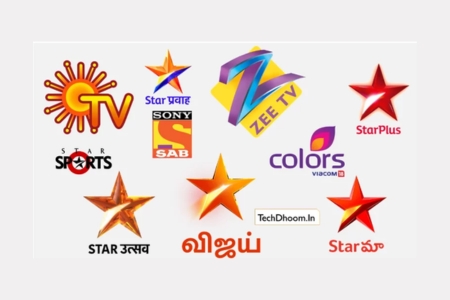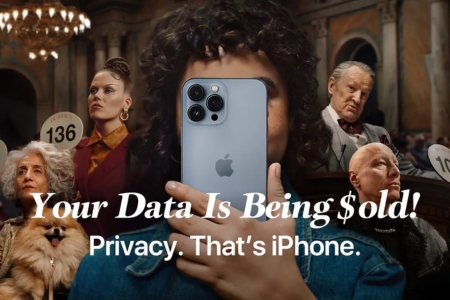Table Of Content
- 1. Understanding Television Marketing
- 2. Identifying Your Target Audience
- 3. Setting Clear Marketing Objectives
- 4. Choosing the Right Television Channels
- 5. Crafting Engaging Content
- 6. Budgeting and Cost Considerations
- 7. Timing and Scheduling of Advertisements
- 8. Monitoring and Analyzing Campaign Performance
- 9. Case Studies of Successful TV Campaigns
- 10. Leveraging Cross-Platform Marketing
- 11. Conclusion

Television marketing continues to be a cornerstone for businesses aiming to reach broad audiences and leave lasting impressions. Why is it so effective? The combination of sight, sound, and storytelling creates unparalleled emotional connections. This guide will help you master the art of television marketing strategy.
Let’s dive into how to make your campaigns unforgettable.
Understanding Television Marketing
Television marketing strategy involves creating and airing advertisements on TV channels to reach a wide audience. Despite the rise of digital platforms, TV remains a powerful medium for building brand awareness. Its ability to deliver visual and emotional impact through audio-visual storytelling makes it unique. For example, Super Bowl commercials often captivate millions, leaving a lasting impression on viewers. By investing in well-crafted TV campaigns, businesses can connect with diverse groups and amplify their brand's presence.
Identifying Your Target Audience

Not all TV viewers are the same, so knowing who you're talking to is key. Start by defining your ideal customer. Are they parents watching family shows or young adults tuning in to late-night comedy? For instance, a toy company might find success in advertising during morning cartoon blocks. Once you understand your audience's habits, preferences, and pain points, you can craft ads that resonate. Tailored messaging ensures your commercials speak directly to your audience, making them more effective.
Setting Clear Marketing Objectives
Every successful campaign begins with a clear goal. Are you aiming to boost sales, increase brand recognition, or promote a new product? Your objectives should be specific and measurable. For example:
- "We aim to increase sales by 20% over the next three months."
- "We want to grow our brand recognition by 15% among young adults."
Measurable goals help you track success and make adjustments if needed. Additionally, clear objectives guide creative decisions, ensuring your message stays focused. Clear objectives are the foundation of a strong TV marketing strategy framework.
Choosing the Right Television Channels

Selecting the right channels can make or break your campaign. Each network attracts different audiences, so align your choice with your target demographic. For instance:
- Advertising on sports channels works well for fitness products.
- Home improvement brands may benefit from HGTV placements.
Also, consider the time slot—prime-time ads may cost more but reach a larger audience. Balancing reach and budget is crucial. Smart channel selection ensures your TV advertising strategy is both cost-effective and impactful.
Crafting Engaging Content

Creating advertisements that grab attention and connect emotionally with viewers is an art. To craft compelling ads, consider the following:
- Understand your audience: Know their preferences, challenges, and motivations. The better you understand what makes them tick, the more effectively you can create a message that resonates.
- Use storytelling: A well-told story can evoke emotions, foster connections, and make your ad memorable. Choose an emotional angle such as humor, nostalgia, or inspiration that aligns with your brand’s message.
- Focus on visual appeal: Use bright colors, clear and readable fonts, and imagery that captures attention. A striking visual can convey a message faster than words.
- Keep it simple: Focus on one key idea or takeaway to ensure clarity. Avoid overloading your ad with too much information.
- Incorporate engagement techniques: Humor, relatable scenarios, or a powerful call to action can further enhance your ad’s effectiveness. Inspire viewers to act by addressing their needs and presenting your product or service as the perfect solution.
- Align with your brand: Ensure every element of your ad reflects your brand’s voice and values to maintain consistency and authenticity.
Budgeting and Cost Considerations
Budgeting for TV ads requires a strategic approach to ensure every dollar counts. Begin by setting your overall marketing budget and identifying how much of it you’re willing to allocate to TV advertising. Consider all costs involved, including production expenses, airtime rates, and additional elements like hiring talent, creating special effects, or composing music.
Maximizing return on investment (ROI) should always be the goal. To do this, monitor the performance of your ads and refine your strategies based on results. Investing in high-impact time slots or shows that attract your target audience can greatly enhance effectiveness.
For example, if your audience is sports enthusiasts, advertising during live games may yield better results. Collaborate with experienced media planners to negotiate favorable airtime deals and optimize your spending. Remember, quality often trumps quantity, so prioritize relevance and execution over the sheer volume of ads.
Timing and Scheduling of Advertisements

The timing and placement of your advertisements can significantly influence their success. Study your target audience’s viewing habits to determine the best time slots. Are they early risers watching the morning news, prime-time viewers tuning in to evening shows, or night owls catching late-night programming? Once you know their preferences, align your ad schedule accordingly.
High-viewership events, such as major sports games or popular TV show finales, provide excellent opportunities for exposure. However, these slots often come at a premium, so weigh the potential benefits against the costs. Avoid bombarding viewers with repetitive ads, as this can lead to viewer fatigue and diminish the impact.
Instead, balance the frequency of your ads with variety to keep the campaign fresh and engaging. Effective scheduling can amplify your ad’s reach, ensuring it connects with the right audience at the right time.
Monitoring and Analyzing Campaign Performance

Tracking the performance of your TV ads ensures you’re getting value for your investment. Start by setting clear metrics, such as increased website traffic, higher sales, or more inquiries.
Use tools like tracking URLs, unique phone numbers, or QR codes embedded in your ads to measure direct responses. Collaborate with broadcasters to access data on viewership numbers and demographics. Compare these insights against your objectives to identify what’s working and what isn’t.
Consider running A/B tests with different ad creatives or schedules to find the most effective combination. Regularly review your strategy and adjust based on data trends. Effective monitoring helps fine-tune future campaigns, ensuring consistent improvements in reach and impact.
Case Studies of Successful TV Campaigns
Television marketing strategy continues to evolve, blending creativity with precision to reach diverse audiences. Here are some standout examples that highlight the power of effective TV marketing strategies.
Cadbury Dairy Milk’s “Shah Rukh Khan My Ad” (2021)
This campaign broke new ground in television advertising strategies by using AI to create personalized ads. Shah Rukh Khan promoted local businesses during Diwali, a crucial shopping season. The TV spot was heartwarming and innovative, showing how a great TV advertising strategy can resonate with viewers while driving local impact.
Swiggy’s IPL Campaigns (2020-2023)

Swiggy leveraged India’s love for cricket with humorous ads tailored to cricket fans. These ads were part of a broader television marketing strategy, supported by social media contests and app offers, proving the power of integrated TV marketing strategies.
Apple’s “Privacy on iPhone” (2022)

This global campaign addressed growing privacy concerns. The TV ad dramatized everyday privacy intrusions and positioned Apple as a solution. A strong TV advertising strategy, combines simplicity with relevance, reinforcing consumer trust.
Coca-Cola’s “Share a Coke” (2019)

This campaign used personalization to connect deeply with audiences. The TV ads encouraged people to find bottles with their names, creating buzz and a sense of community. It exemplifies how a creative television marketing strategy can drive engagement and sales.
Leveraging Cross-Platform Marketing
Today’s television advertising strategies work best when paired with digital platforms. Consistency across TV and social media creates a stronger impact.
For instance, Nike’s “You Can’t Stop Us” (2020) combined a powerful TV ad with digital campaigns on YouTube and Instagram. The TV marketing strategies included behind-the-scenes content and user-generated posts, making the campaign interactive and memorable.
In India, Tanishq’s “Ekatvam” (2020) used a compelling TV ad to promote diversity. Digital platforms extended the message with videos showcasing craftsmanship, ensuring the television marketing strategy reached both emotional and practical touchpoints.
Another great example is Jio’s IPL Campaigns (2020-2023). Their TV ads promoted streaming services, while social media ran polls and contests, proving how a holistic TV advertising strategy can create engagement across multiple channels.
Conclusion
Television marketing remains a powerful way for brands to connect with wide audiences and leave lasting impressions. A strong television marketing strategy focuses on storytelling, impactful visuals, and messages that resonate. Whether you're introducing a product or building loyalty, TV marketing strategies can make your brand stand out.
For businesses seeking expert help, Excellent Publicity is the top choice advertising agency. Our proven approach to television advertising strategies and TV advertising strategy ensures your campaigns are effective and memorable. Contact the experts at Excellent Publicity today.
FAQs
The cost depends on the channel, time slot, ad length, and campaign duration. Prime-time slots on popular networks are more expensive, while local or off-peak ads cost less. Campaigns can range from a few thousand dollars to millions, depending on your goals and audience reach.
Understand your target audience’s habits and preferences. Research demographics, viewership ratings, and the type of content each channel airs. For instance, sports brands might choose sports networks, while lifestyle brands could target entertainment or family-oriented channels.
Ad length depends on your message and budget. A 30-second ad is common because it’s concise and engaging. However, 15-second spots are cost-effective, while 60-second ads provide more storytelling opportunities. Match the length to your campaign goals and audience attention span.
Evaluate metrics like viewer ratings during your ad, website traffic spikes, and increased sales or inquiries. Use tracking tools, unique promo codes, or customer surveys to link results directly to your campaign, providing clear insights into its effectiveness.



